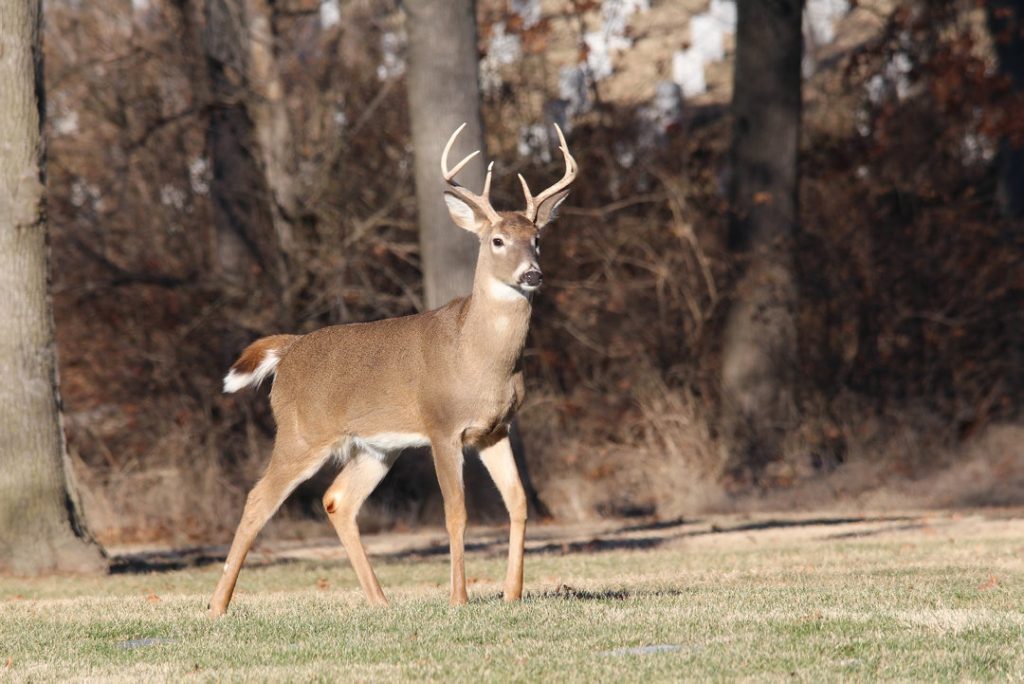At archery stores and big-box outfitters across Pennsylvania, it’s prime time for deer scent sales.
Weeks into the archery deer season, and six weeks before the opening of rifle deer, hunters can choose among dozens of brands of doe-in-estrus attractants intended to lure that big buck closer to the tree stand.
Masking scents designed to overwhelm human smells are tinctured with the odors of raccoon, fox and other animals. But the big sellers are attractants, mostly the bottled urine of does while they’re in estrus. But ample research raises legitimate concerns. Well-publicized Texas experiments show that hormone-addled bucks will sniff anything, including new-car smell, about as often as commercial doe urine scents.
Questions linger about what bucks think of conglomerates made from mixing the urine of many does, and many wildlife management organizations including the state Game Commission ban the use of urine-based scents in chronic wasting disease management zones.
Less research has been conducted on attractant scents developed from the excretions of deer glands. During the rut, does provide information about their reproductive cycle by urinating over tarsal glands on the inside of their back knees. The combination communicates the doe’s age and whether she’s in estrus, as well as leaving hormonal breadcrumbs for rutting bucks to follow.
But urine begins dissolving into ammonia hours after release, and a light rain can dilute it. Bucks and does reveal abundantly more self-identifying information from glandular secretions, and the viscous, oily liquids don’t wash away with the rain.
“Very little has been written about [deer] glands except the tarsal gland, probably because of its connection with doe-in-estrus urine, which is big money for the bottling companies,” said Brian R. Kightlinger, an archer and author of hunting books. “Urine is easy to gather in volume at deer farms, but fluid from glands has to be taken individually from each deer.”
In his newly published “Non-Verbal Whitetail Deer Communication: The Power of Glands” (LITF Outdoors, $15), the school teacher from Crawford County explains the primary scent-producing glands of bucks and does and its potential use in hunting situations.
“Hunters think of bucks following doe scents, and they do,” he said. “But during the rut bucks are extremely territorial and will rush in to chase another buck out of its area. Glands that produce fluids from bucks can be very good at attracting bucks…. I haven’t used urine scents since 2011.”
Kightlinger said he has had success hunting in Ohio and Pennsylvania using glandular scents from Smokey’s Deer Lures, produced and marketed by John McNicholas, of New Cumberland, West Virginia.
Many hunters use a single doe urine brand throughout the hunting season. That’s as inefficient as using one glandular scent from the September pre-rut through the January post-rut, said Kightlinger, because the hormonal signals communicated among deer change throughout the reproductive season. In his book, he outlines the pertinent glands and their functions.
The waxy substance produced by the interdigital glands, located between the hooves, enables deer to to identify each other and warn of impending danger. The metatarsal gland, covered by a tuft of white fur about 5 inches above a deer’s rear hooves, is believed to exude a powerful identifying scent that rutting bucks use to ward off male interlopers. Kightling said the gland grows larger at northern latitudes and is believed by some biologists to be vestigal.
When hunters can smell a deer before seeing it, they’re whiffing the oily secretion of the tarsal glands. Some successful hunters remove the tarsals while field dressing a deer and drag them behind while walking in on their next hunt.
Two glands on the head send out more precise information. One of the most effective lures, said Kightlinger, is taken individually from the preorbital glands, located in the tear ducts. Tiny muscles open the glands to emit more fluid, particularly when bucks leave their scents on scrapes and licking branches. Discharge from the forehead glands above the eyes and between the antlers of a buck is rubbed on trees while scraping off velvet. The oil communicates the age, social status and breeding status of the buck leaving the scrape, Kightlinger said.
Some 5 million olfactory receptors are in the human nose. Dogs have 220 million. White-tailed deer have 297 million receptors, enabling their remarkable sense of smell. The mucus produced in their noses helps deer to leave their scent on “licking branches” often hanging above scrapes and rub lines. Deer snot, however, is not used in the rendering of gland scents. When a deer is seen lifting its head and lapping its tongue, it is forcing air over another smelling tool, the vomeronasal or Jacobson’s organ. Located on the roof of the mouth, it zeros in on many individual scents, but does not produce a scent of its own.
Finally, spit. Saliva aids in digestion, but slobber produced by salivary glands is also left on uneaten browse and licking sticks, telling other deer who was there first. Salivary gland extract is not used in the making of scent lures, and saliva is confirmed to pass the CWD protein. Nasal mucus is believed to also spread the disease.
“Gland lures work. It’s how deer communicate,” said Kightlinger. “But they use it sparingly and so should hunters. Too much will scare them away. A half a drop, maybe several drops for some scents, can last through the hunting season.”
— John Hayes/Pittsburgh Post-Gazette/Tribune News Service




